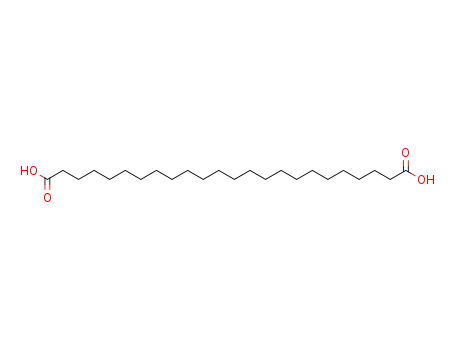Technology Process of Tetracosanedioic acid
There total 14 articles about Tetracosanedioic acid which
guide to synthetic route it.
The literature collected by LookChem mainly comes from the sharing of users and the free literature resources found by Internet computing technology. We keep the original model of the professional version of literature to make it easier and faster for users to retrieve and use. At the same time, we analyze and calculate the most feasible synthesis route with the highest yield for your reference as below:
synthetic route:
- Guidance literature:
-
With
5%-palladium/activated carbon;
In
methanol;
at 50 ℃;
Inert atmosphere;
DOI:10.1002/chem.201504882
- Guidance literature:
-
Multi-step reaction with 3 steps
1: 1.) triethylamine; 2.) 20percent HCl / 1.) chloroform, 35 deg C, 5 h; 2.) chloroform, reflux, 5 h
2: sodium hydroxide / ethanol / 1 h / Heating
3: 1.) hydrazine hydrate; 2.) potassium hydroxide / 1.) triethanolamine, 130 deg C; reflux, 4 h; 2.) triethanolamine, 200 deg C, 9 h
With
hydrogenchloride; potassium hydroxide; sodium hydroxide; hydrazine hydrate; triethylamine;
In
ethanol;
DOI:10.1021/ja00209a032
- Guidance literature:
-
Multi-step reaction with 4 steps
1: thionyl chloride / 1 h / 50 °C
2: 1.) triethylamine; 2.) 20percent HCl / 1.) chloroform, 35 deg C, 5 h; 2.) chloroform, reflux, 5 h
3: sodium hydroxide / ethanol / 1 h / Heating
4: 1.) hydrazine hydrate; 2.) potassium hydroxide / 1.) triethanolamine, 130 deg C; reflux, 4 h; 2.) triethanolamine, 200 deg C, 9 h
With
hydrogenchloride; potassium hydroxide; sodium hydroxide; thionyl chloride; hydrazine hydrate; triethylamine;
In
ethanol;
DOI:10.1021/ja00209a032




